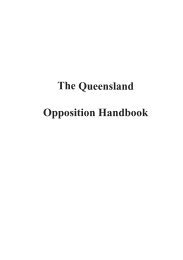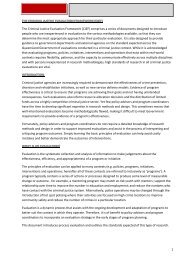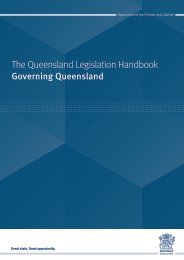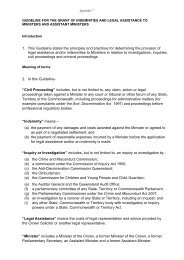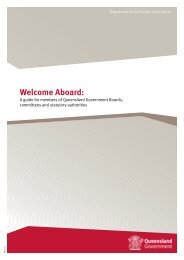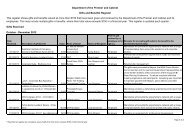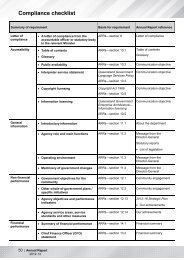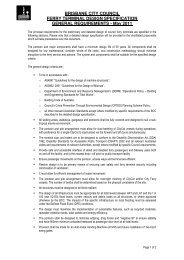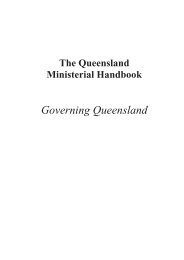Rehabilitative needs and treatment of Indigenous offenders in ...
Rehabilitative needs and treatment of Indigenous offenders in ...
Rehabilitative needs and treatment of Indigenous offenders in ...
Create successful ePaper yourself
Turn your PDF publications into a flip-book with our unique Google optimized e-Paper software.
If [<strong>of</strong>fenders] are from a family that has been through the [prison] system,the whole process [<strong>of</strong> go<strong>in</strong>g to prison] is seen as the ‘norm’.For some, it’s not a big deal to re-<strong>of</strong>fend, because their family is <strong>of</strong>ten <strong>in</strong>jail.Jail can be a safe haven.The last comment provided above describes how some ISDR participantsbelieved that imprisonment can represent a pseudo support system for<strong>Indigenous</strong> people who would otherwise exist <strong>in</strong> highly dysfunctionalsituations. These views are consistent with research f<strong>in</strong>d<strong>in</strong>gs discussed <strong>in</strong>chapter three (Ogilvie & Zyl 2001).Despite acknowledg<strong>in</strong>g the disadvantage that can characterise <strong>Indigenous</strong>communities, ISDR participants recognised the crucial role <strong>Indigenous</strong> Elders<strong>and</strong> workers play <strong>in</strong> <strong>of</strong>fender re<strong>in</strong>tegration. Their <strong>in</strong>volvement is seen tohighlight the strength <strong>of</strong> <strong>Indigenous</strong> communities.Geographical Differences <strong>in</strong> Social <strong>and</strong> Economic DisadvantageISDR participants recognised that the issues faced by <strong>of</strong>fenders from rural<strong>and</strong> remote communities can be different from those faced by urban-based<strong>of</strong>fenders. The social <strong>and</strong> economic disadvantage experienced by <strong>Indigenous</strong><strong>of</strong>fenders from rural <strong>and</strong> remote communities is generally viewed to be morepronounced than that experienced by <strong>Indigenous</strong> <strong>of</strong>fenders from urbancommunities.Service providers frequently identified the lack <strong>of</strong> services <strong>and</strong> transport(public <strong>and</strong> private) <strong>in</strong> rural <strong>and</strong> remote communities. A lack <strong>of</strong> services isapparent <strong>in</strong> the follow<strong>in</strong>g:There’s no Aborig<strong>in</strong>al <strong>of</strong>fender services here, the nearest availableservices are <strong>in</strong> Toowoomba or Brisbane [over 200km away].Offenders with family <strong>and</strong> social networks <strong>in</strong> rural <strong>and</strong> remote communitiesface difficulty return<strong>in</strong>g home upon their release. QCS staff <strong>and</strong> <strong>Indigenous</strong>service providers reported that <strong>of</strong>fenders without the means to return home<strong>of</strong>ten become homeless <strong>in</strong> the town or city <strong>in</strong> which they are released. Thislack <strong>of</strong> transport also limits how <strong>of</strong>ten family <strong>and</strong> friends can visit <strong>of</strong>fendersdur<strong>in</strong>g their period <strong>of</strong> imprisonment.65



